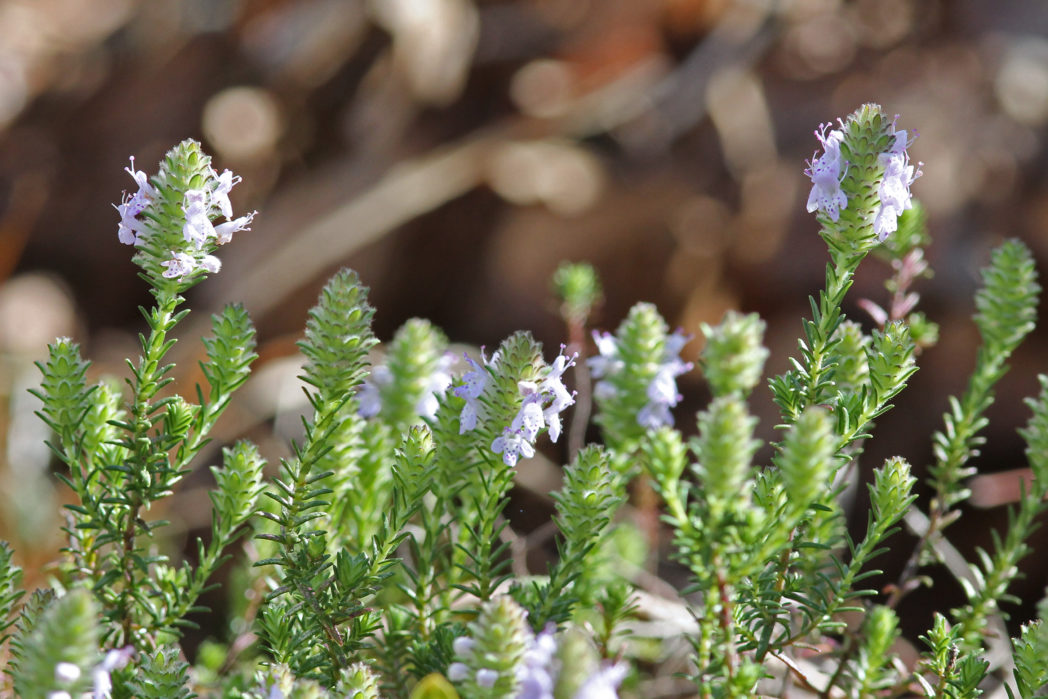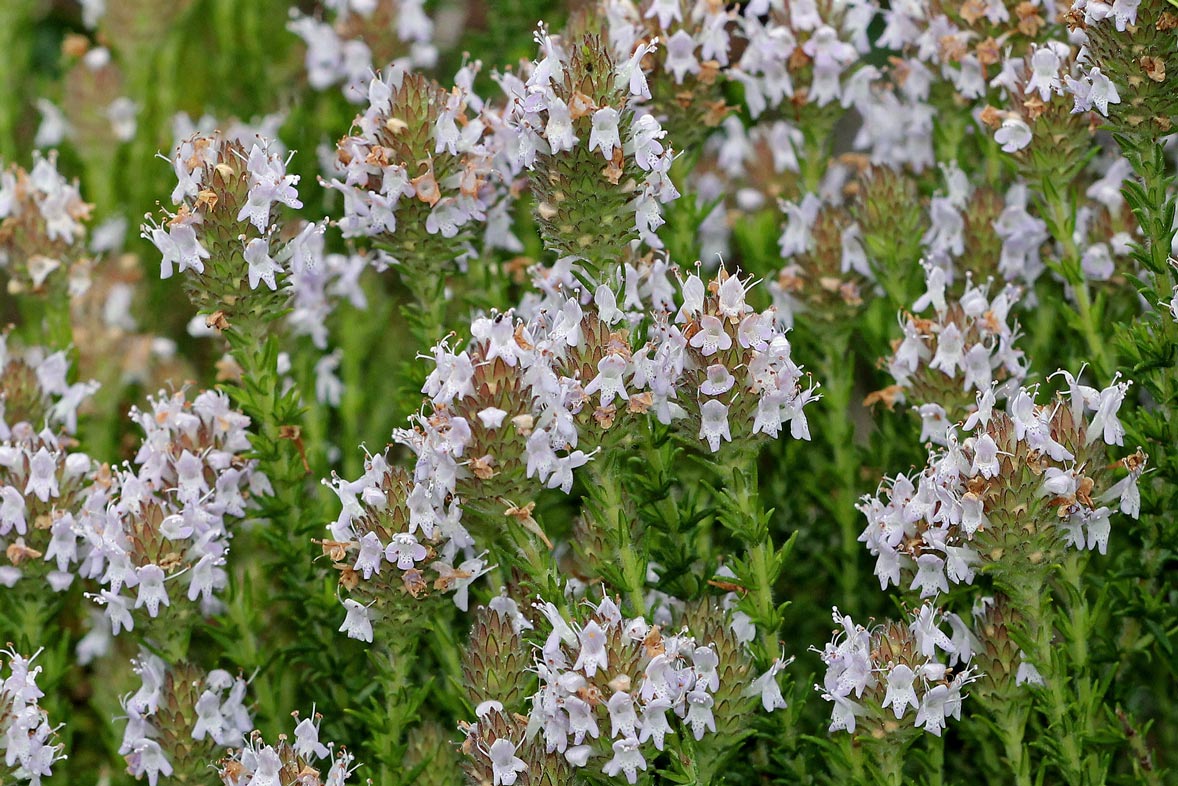Wild pennyroyal
Pictured above: WIld pennyroyal (Piloblephis rigida) by Mary Keim. Click on terms for botanical definitions. View post as a PDF.
Wild pennyroyal (Piloblephis rigida) is a low-growing, evergreen, herbaceous to semi-woody shrub. It typically flowers in late winter through spring, but can bloom year-round. It occurs naturally in scrub, scrubby and pine flatwoods, sandhills, dry prairies and ruderal areas. Except for a small population in Georgia, it is endemic to Florida. Its flowers are attractive to a variety of bees and butterflies. Because of its early bloom period, it supplies pollen and nectar when little else is available, making it an important part of natural landscaping and restoration areas.

Wild pennyroyal’s small, 2-lipped flowers may be lavender, purple or pinkish. Lower lips are lobed with dark purple spots. Stamens are prominent. Flowers are borne in dense, cone-shaped terminal clusters. Sepals are pubescent and green with purple margins. Leaves are tiny and needle-like with entire margins. They are oppositely arranged. Stems are semi-woody and branched. Fruit is a small aggregate of four nutlets.
Piloblephis rigida is the only species in its genus. The genus name comes from the Greek pilo, or “hairy,” and blephis, or “eyelid,” and refers to the tiny soft hairs that coat the sepals. The species epithet rigida is from the Latin rigidus, meaning “rigid,” and refers to its stiff branches.
The entire plant is delightfully aromatic, particularly when crushed. Like most members of the mint family, it has a minty smell, although the scent may be more lemony in some populations. Its leaves can also be brewed into a minty tea.
Family: Lamiaceae (Mint family)
Native range: Peninsular Florida
To see where natural populations of Wild pennyroyal have been vouchered, visit florida.plantatlas.usf.edu.
Lifespan: Perennial
Soil: Dry, well-drained sandy soils
Exposure: Full sun
Growth habit: 1–2’ tall and equally broad
Propagation: Seeds, cuttings
Florida regions of landscape suitability: North (peninsular), Central, South
Garden tips: Wild pennyroyal can be mixed with other wildflowers in a garden setting and in pollinator
gardens. It is drought-tolerant and grows in nutrient-poor soil.
Wild pennyroyal is often available at nurseries that specialize in native plants. Visit PlantRealFlorida.org to find a native nursery on your area.
Learn more about Wild pennyroyal from the Florida Native Plant Society and the Institute for Regional Conservation.

